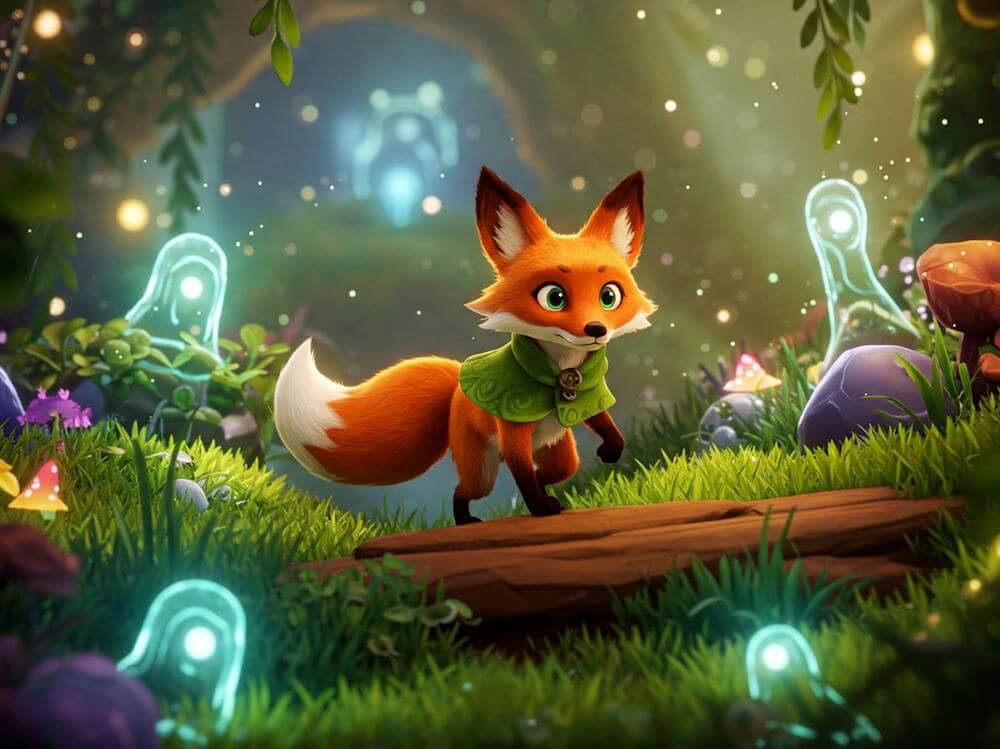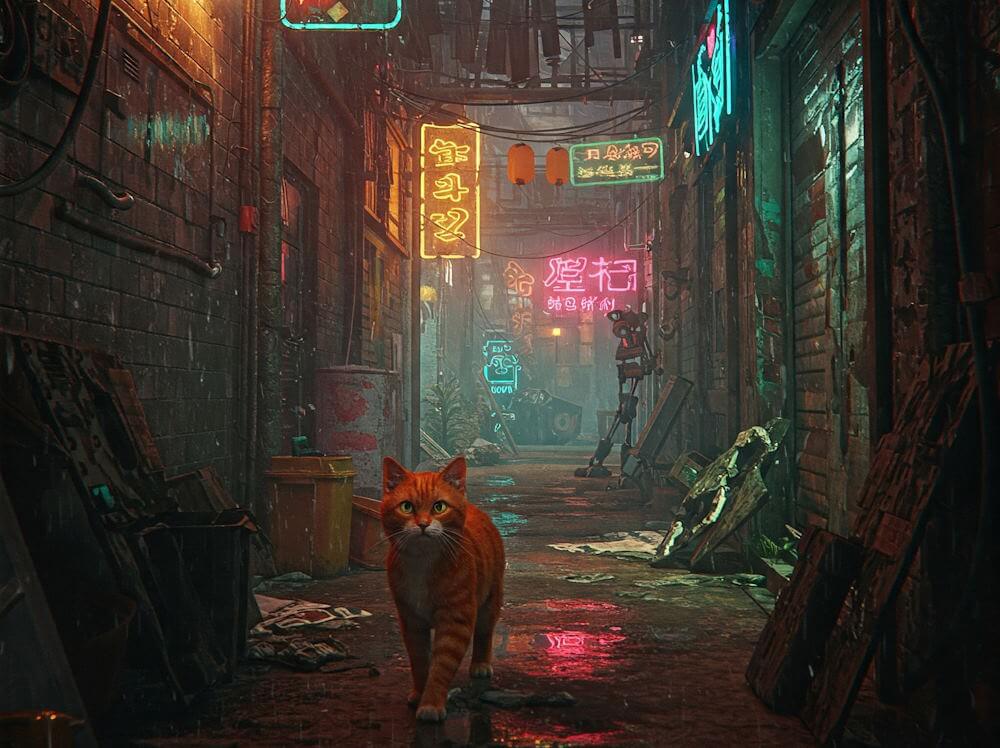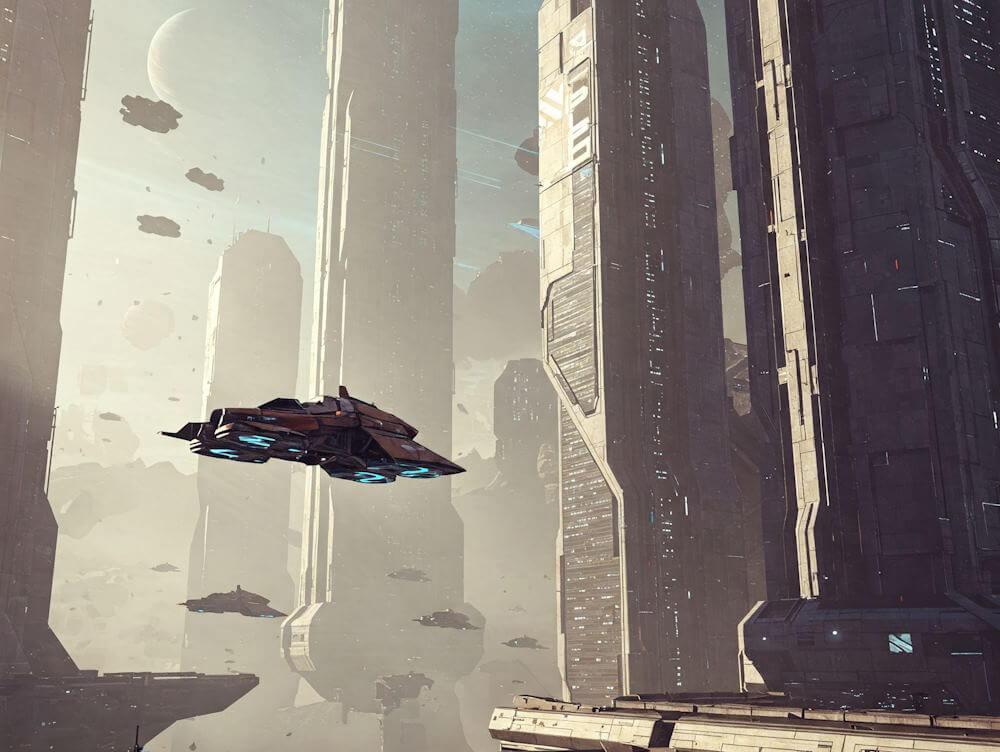Tunic is a remarkable indie game that has captured the hearts of gamers and critics alike since its initial launch in March 2022. Developed by Andrew Shouldice, this action-adventure title features charming visuals reminiscent of classic games, combined with innovative gameplay mechanics that set it apart in a crowded indie game landscape. The game’s protagonist, a small fox, embarks on a grand journey through a mysterious world, characterized by intricate puzzles and a rich environment that invites exploration and discovery.
Upon its release, Tunic was met with widespread acclaim for its art style, which combines vibrant colors and detailed landscapes, effectively evoking a sense of nostalgia while presenting fresh aesthetics. The game’s isometric perspective enhances the intricate designs and invites players to delve deeper into both the environment and storyline. Furthermore, Tunic skillfully balances challenge and accessibility, allowing newcomers to enjoy its mechanics while still providing depth for seasoned players. This seamless integration of charming visuals with engaging gameplay has solidified Tunic’s position as an exemplary indie gem.
One of the standout features of the game is its enigmatic nature; players are encouraged to explore and interpret the world around them with minimal hand-holding. The lack of direct prompts leads to a sense of accomplishment when players uncover new secrets and progress through the game. This creates an immersive experience, allowing each gamer to engage with the gameplay uniquely, fostering a community of players who share discoveries and strategies.
As Tunic continues to evolve through updates and community engagement, its growing reputation in the indie genre highlights how innovative design choices can resonate with a wide audience, making it an essential title for those exploring contemporary gaming offerings.
The Gameplay Mechanics
Tunic offers a captivating fusion of exploration, puzzles, and combat that together create an immersive player experience reminiscent of classic adventure titles. The gameplay mechanics are finely tuned, inviting players to delve into a richly crafted world filled with secrets and challenges. At its core, the exploration aspect encourages players to traverse diverse environments, each brimming with hidden treasures and lore. The absence of a traditional map shifts the responsibility onto the player to navigate the terrain, enhancing the sense of discovery akin to titles like “The Legend of Zelda: Breath of the Wild.”
Puzzles in Tunic are ingeniously designed, offering a blend of straightforward and enigmatic challenges that test players’ logic and patience. These puzzles often require keen observation and lateral thinking, reflecting the intricate designs found in games like “Fez” or “The Witness.” The satisfaction derived from piecing together clues and solving riddles serves not only to progress the story but also fosters a sense of accomplishment, compelling players to immerse themselves deeper into the narrative.
Combat in Tunic, while challenging, is also rewarding. Players control a small fox-like character that engages in combat against a variety of foes. Mastery of timing and strategy is essential, drawing parallels to the combat mechanics seen in titles such as “Dark Souls.” The ability to dodge, block, and counterattack maintains an engaging dynamic as players adapt to different enemy behaviors. Moreover, Tunic incorporates an upgrade system that allows for customization of combat abilities, which enhances the depth of the gameplay experience.
Overall, Tunic’s gameplay mechanics work synergistically to create a captivating adventure. The charming visuals combined with innovative exploration, clever puzzles, and strategic combat resonate strongly with fans of the genre, ensuring that it stands out as an indie gem worth experiencing.
Visuals and Design
The indie game Tunic presents an enchanting visual experience that is pivotal to its charm and overall atmosphere. One of the most striking aspects of Tunic’s design is its vibrant color palette, which breathes life into every scene. The carefully chosen hues not only capture the attention of players but also evoke emotions that align with the game’s nuanced narrative. The use of bright greens, warm yellows, and deep blues offers a whimsical yet immersive quality, making the exploration of its world feel rewarding and dynamic.
Additionally, the detailed environments in Tunic contribute significantly to its appeal. Each area is meticulously crafted, featuring diverse landscapes ranging from lush forests to eerie dungeons. The varying textures and subtle animations engage players, encouraging them to explore nooks and crannies within the expansive world. The intricate design elements, from the foliage swaying with the wind to the reflections on water surfaces, enhance the player’s sense of immersion, making each location feel alive and meaningful.
Character design also stands out as a hallmark of Tunic’s artistic style. The protagonist, a small fox, is uniquely stylized, fostering a sense of connection and relatability. The minimalistic yet expressive design allows players to project their emotions onto the character, grounding them in the adventure that unfolds. Supporting characters and enemies are similarly designed with distinct identities, each contributing to a vibrant ecosystem that both contrasts with and complements the protagonist’s quest.
In summary, Tunic’s visuals and design serve as a powerful testament to the artistic creativity found within indie games. The combination of vivid colors, meticulous environmental details, and engaging character design work together seamlessly to enhance the player’s journey, contributing to a truly captivating gameplay experience that resonates long after the adventure concludes.
Soundtrack and Audio Experience
The soundtrack and audio experience of Tunic play a pivotal role in crafting an immersive environment that enhances gameplay. The score, composed by a talented team, blends orchestral elements with a touch of electronic sounds, resulting in an auditory landscape that resonates deeply with the game’s aesthetic. This unique combination of music sets the tone for various environments, creating a sense of exploration and wonder that is vital to the player’s journey. Throughout Tunic, the melodies shift in response to the player’s actions, demonstrating how the score can dynamically reflect the unfolding narrative.
Furthermore, sound effects in Tunic are meticulously designed to complement the visual elements. Each interaction, from the clinking of the character’s footsteps to the sounds of environmental changes, enriches the player’s experience. These audio cues provide critical feedback, alerting players to nearby treasures, threats, or secrets, thereby enhancing engagement and encouraging exploration. The sound effects are not just additive; they are integral to the gameplay, often serving as a guiding mechanism that helps players navigate the enchanting world of Tunic.
The combined influence of music and sound effects contributes to a captivating atmosphere, drawing players further into the game. The subtle harmonies evoke feelings of nostalgia and wonder, reminiscent of classic adventure games while maintaining a unique identity. The thoughtful arrangement of audio elements fosters a connection between the player and the world, making every discovery feel significant. Overall, Tunic’s audio experience is not merely background noise; it is an essential component that enhances immersion, emotional resonance, and the overall gaming experience, ensuring that players are fully enveloped in this indie gem.
Story and Narrative Depth
The indie game Tunic offers players a deeply engaging narrative experience that uniquely unfolds without the use of conventional dialogue. At its core, Tunic centers around a small, anthropomorphic fox embarking on a quest in a mysterious world filled with secrets, challenges, and ancient lore. The absence of traditional spoken language forces players to interpret the narrative through environmental storytelling, visual cues, and cryptic symbols. This deliberate choice invites players to engage more actively with the game’s world and creates a richer emotional connection.
Throughout the game, players encounter various inhabitants, artifacts, and remnants of a long-lost civilization that contribute to the overarching story. The character development of the protagonist, the fox, is particularly noteworthy. As players navigate through a beautifully crafted landscape, they witness the gradual evolution of the character’s abilities and understanding of the world. The game effectively conveys growth through exploration, discovery, and the challenges faced, rather than through explicit narrative exposition.
The thematic elements present in Tunic further enhance its narrative depth. Concepts such as adventure, courage, and the pursuit of knowledge are interwoven into the gameplay mechanics and environmental design. The game encourages exploration, rewarding curiosity with hidden areas and lore, while simultaneously emphasizing the importance of overcoming adversity. This integration results in a cohesive narrative experience that is both engaging and thought-provoking.
By choosing to forego traditional dialogue, Tunic immerses players in its world on a more intimate level. This method of storytelling fosters a sense of discovery and personal interpretation, resulting in players forming their own meaning from the experience. The combination of intricate character development, thematic richness, and environmental storytelling culminates in a compelling narrative that resonates with players long after their adventure concludes.
Community and Player Engagement
Tunic has not only garnered critical acclaim for its gameplay and design but has also developed a vibrant community that plays a crucial role in its ongoing success. The game’s distinct aesthetic and challenging puzzles have inspired fans to engage in various creative ventures, contributing to an immersive experience that transcends mere gameplay. Fan creations can be found scattered across different platforms, showcasing everything from artwork and fan fiction to innovative gameplay strategies. This thriving ecosystem of creativity enriches the overall experience for all players, inviting them to share interpretations and experiences.
Online forums and community platforms serve as hubs for player interaction, where enthusiasts discuss various aspects of Tunic. Dedicated threads on sites like Reddit and gaming forums allow players to ask questions, share tips, and debate interpretations of the game’s intricate lore. These discussions not only foster a sense of camaraderie among players but also offer invaluable insights into gameplay mechanics and strategies, enhancing the gaming experience for novices and veterans alike.
Social media also plays a significant role in connecting Tunic players. Hashtags related to the game abound on platforms such as Twitter and Instagram, making it easy for fans to share their thoughts and creations. Official accounts regularly engage with the community, putting a spotlight on notable fan creations and encouraging further dialogue. Streamers and content creators add yet another layer to player engagement by sharing their gameplay experiences, tutorials, and challenges, which contribute to a diversified understanding of the game’s mechanics.
The collective enthusiasm and investment displayed by the Tunic community extend the game’s longevity. When players feel connected to others who share their passion, they are more likely to continue exploring the game, analyze its nuances, and participate actively in discussions. This communal aspect helps maintain a lively and dynamic environment that fosters loyalty, not only to the game itself but also to the shared experience among its players.
Comparisons with Other Indie Titles
Tunic, as an indie gem, stands alongside several influential titles that have shaped the landscape of indie gaming. Comparable games such as Hollow Knight and Celeste share a common thread in their artistic direction and gameplay mechanics, yet Tunic differentiates itself through its unique blend of exploration and puzzle-solving elements. The game employs a distinctive isometric perspective, drawing players into its vibrant world, reminiscent of classic adventure titles while incorporating modern design sensibilities.
Hollow Knight, for instance, presents a dark, atmospheric setting complemented by fluid combat mechanics. While both Tunic and Hollow Knight feature a rewarding exploration system, Tunic places a heavier emphasis on deciphering cryptic clues and environmental storytelling. The latter’s art style is also noteworthy; it embraces a charming, cartoonish aesthetic that is both inviting and richly detailed, in contrast to Hollow Knight’s more gothic elements. This divergence in art style contributes to Tunic’s enchanting appeal, allowing players to navigate a world filled with wonder and mystery.
Likewise, when placed alongside Celeste, known for its intense platforming and poignant narrative, Tunic differentiates itself with its more subdued storytelling approach. The game does not rely on dialogue but instead engages players through visual cues and item discoveries. This choice fosters a sense of immersion, encouraging individuals to piece together the narrative themselves. Moreover, both titles excel in their ability to create emotionally resonant experiences, yet Tunic achieves this through a non-linear gameplay structure, inviting exploration at one’s own pace.
In recognizing Tunic among its indie counterparts, it is evident that its unique blend of engaging exploration, artistic charm, and innovative puzzle design earns it a spot alongside influential titles such as Hollow Knight and Celeste. These qualities, combined with its distinctive presentation, solidify Tunic as an essential play for any indie gaming enthusiast.
Why You Should Play Tunic Now
Tunic has emerged as a must-play title in the indie gaming sector, offering a unique and compelling experience that demands immediate attention from gamers. One of the standout features of Tunic is its engaging gameplay that melds exploration and combat within a beautifully crafted world. Players assuming the role of a small fox embark on an adventure that is not only visually appealing but also intricately designed to challenge both their intellect and skill. The game’s isometric perspective allows for a fresh approach to puzzle-solving and navigation, offering players new dimensions to explore. This innovative gameplay design sets Tunic apart from many mainstream titles, providing an experience that feels both daring and original.
Critical acclaim has surrounded Tunic since its debut, with numerous reviews praising its artistic direction, breathtaking visuals, and the depth of its gameplay. Reviewers have noted the game’s ability to evoke nostalgia while simultaneously offering a fresh take on classic adventure mechanics. It is not merely the gameplay that has garnered attention; the game’s rich lore and intricate storytelling invite players to delve deeply into its mysteries, allowing for rewarding exploration. This fusion of exploration and narrative enhances the overall gaming experience, making it more than just another title to pass the time.
Moreover, supporting indie games like Tunic has wider implications for the gaming industry. By purchasing and playing such titles, gamers help to foster innovation, creativity, and diversity within the market. Independent developers often explore unique themes, storylines, and gaming mechanics that mainstream companies might shy away from. Therefore, engaging with Tunic not only provides a memorable adventure but also contributes to the sustainability of indie development, ensuring that unique and innovative experiences continue to thrive in the gaming landscape.
Conclusion and Final Thoughts
In summary, Tunic stands out as a remarkable entry in the indie gaming landscape, showcasing the potential of independent developers to create enriching gaming experiences. The fusion of captivating visuals, a meticulously crafted world, and innovative gameplay mechanics sets it apart from many contemporary titles. Players are invited to explore a beautifully designed environment filled with hidden secrets, clever puzzles, and engaging combat that collectively contribute to an immersive adventure.
Tunic’s art style, which merges vibrant colors with a whimsical aesthetic, evokes a nostalgic feel reminiscent of classic games while also presenting a fresh perspective. This visual charm, coupled with a hauntingly delightful soundtrack, enhances the emotional depth of the experience. As players guide the adorable fox protagonist through intricate landscapes, they encounter challenges that require critical thinking, dexterity, and exploration, reinforcing the essence of what makes gaming both enjoyable and fulfilling.
The game’s unique approach to storytelling is another noteworthy aspect. It embraces a minimalist narrative style, encouraging players to piece together the lore through environmental cues and cryptic symbols. This not only fosters a sense of discovery but also strengthens the player’s connection to the game world. Tunic ultimately invites gamers to reflect on their journeys, instilling a sense of accomplishment and curiosity that resonates long after the screen fades to black.
For those seeking a fresh and enriching gaming experience, Tunic is undoubtedly an indie gem worth playing. Its contribution to the gaming community demonstrates the power of creativity and innovation within this sphere. As players dive into the enchanting world of Tunic, they will not only enjoy hours of entertainment but also appreciate the artistry and passion that independent games can offer.



